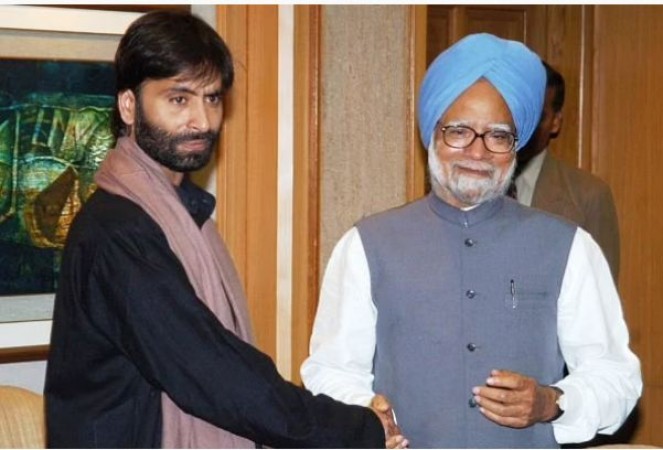Terrorism at it's Peak in Kashmir During UPA Government 2004-2014

Terrorism Peaks in Kashmir During UPA Government Before 2014
Date: July 16, 2024
Location: Srinagar, Jammu and Kashmir
The period between 2004 and 2014, under the United Progressive Alliance (UPA) government, witnessed a significant surge in terrorism in the Kashmir Valley. This decade marked one of the most tumultuous times in the region’s history, characterized by frequent militant attacks, high civilian casualties, and an overall atmosphere of fear and instability.
Escalation of Violence
During the UPA tenure, Kashmir saw a dramatic increase in terrorist activities. The escalation of violence can be attributed to several factors, including cross-border terrorism, internal insurgency, and the infiltration of foreign militants. Some key incidents during this period include:
-
2005 Srinagar Bombings: A series of car bombings and grenade attacks rocked Srinagar, the summer capital of Jammu and Kashmir. These attacks, targeting busy marketplaces and security installations, resulted in numerous casualties and widespread panic.
-
2008 Amarnath Land Transfer Controversy: The decision to transfer land to the Amarnath Shrine Board led to massive protests and strikes in the valley. This period of civil unrest was exploited by terrorist groups to launch attacks on both civilians and security forces, further destabilizing the region.
-
2010 Kashmir Unrest: A cycle of violence began in June 2010, following the killing of a teenager by security forces. The unrest, which lasted for several months, saw frequent clashes between protestors and security personnel, leading to a high number of civilian deaths and injuries.
Key Terrorist Attacks (2004-2014)
Several significant terrorist attacks took place during the UPA government, which had a profound impact on the region and the country:
-
2005 Delhi Bombings: On October 29, 2005, a series of coordinated bomb blasts occurred in Delhi, killing 62 people and injuring over 200. Although not in Kashmir, this attack was a part of the larger trend of escalating terrorism during this period.
-
2006 Varanasi Bombings: On March 7, 2006, bomb blasts at a temple and railway station in Varanasi killed 28 people and injured over 100. This attack was part of the broader wave of terrorism affecting India.
-
2006 Mumbai Train Bombings: On July 11, 2006, a series of coordinated bombings on Mumbai’s suburban railway system killed over 200 people and injured more than 700. This attack highlighted the reach of terrorist networks within India.
-
2008 Jaipur Bombings: On May 13, 2008, a series of bomb blasts in Jaipur killed 63 people and injured over 200. The attacks were aimed at destabilizing the region and spreading fear.
-
2008 Ahmedabad Bombings: On July 26, 2008, a series of bomb blasts in Ahmedabad killed 56 people and injured over 200. The attacks were part of a coordinated effort to strike multiple locations simultaneously.
-
2008 Delhi Bombings: On September 13, 2008, a series of bomb blasts in Delhi killed 30 people and injured over 90. The attacks targeted busy marketplaces and were part of a larger trend of urban terrorism.
-
2008 Mumbai Attacks: From November 26 to 29, 2008, a series of coordinated terrorist attacks across Mumbai resulted in 166 deaths and over 300 injuries. The attacks targeted high-profile locations, including the Taj Mahal Palace Hotel, Oberoi Trident Hotel, and Nariman House.
-
2011 Delhi High Court Bombing: On September 7, 2011, a bomb blast outside the Delhi High Court killed 15 people and injured over 70. The attack was claimed by the Harkat-ul-Jihad al-Islami (HuJI) and the Indian Mujahideen (IM).
Militant Groups and Operations
Several militant groups were active in the Kashmir Valley during this period, with Hizbul Mujahideen, Lashkar-e-Taiba, and Jaish-e-Mohammed being the most prominent. These groups were responsible for numerous attacks on security forces, government installations, and civilians.
-
Hizbul Mujahideen: The largest indigenous militant group in Kashmir, Hizbul Mujahideen, continued its operations with a focus on targeting security forces and government officials.
-
Lashkar-e-Taiba (LeT): A Pakistan-based militant organization, LeT, was involved in several high-profile attacks, including the 2008 Mumbai attacks. In Kashmir, LeT carried out numerous assaults on Indian security personnel and civilians.
-
Jaish-e-Mohammed (JeM): Known for its suicide attacks, JeM conducted several high-casualty operations, targeting Indian military and police establishments.
Impact on Civilians
The decade-long surge in terrorism had a profound impact on the civilian population of Kashmir. Frequent encounters between militants and security forces led to collateral damage, loss of lives, and displacement of families. The pervasive sense of insecurity affected daily life, with schools, businesses, and normal activities frequently disrupted.
Government and Security Forces Response
The UPA government and security forces faced significant challenges in countering the escalating terrorism. Measures included:
-
Increased Troop Deployment: The government deployed additional troops to the region to enhance security and conduct counter-terrorism operations.
-
Intelligence Operations: Efforts were intensified to improve intelligence gathering and disrupt the networks of militant groups.
-
Civic Action Programs: Initiatives aimed at winning the hearts and minds of the local population were launched to counter the influence of militants.
Conclusion
The period under the UPA government before 2014 was marked by a peak in terrorism in Kashmir. The rise in militant activities and the corresponding response from security forces led to a cycle of violence and instability in the region. The legacy of this turbulent decade continues to influence the socio-political landscape of Kashmir, shaping the ongoing struggle for peace and stability in the valley.